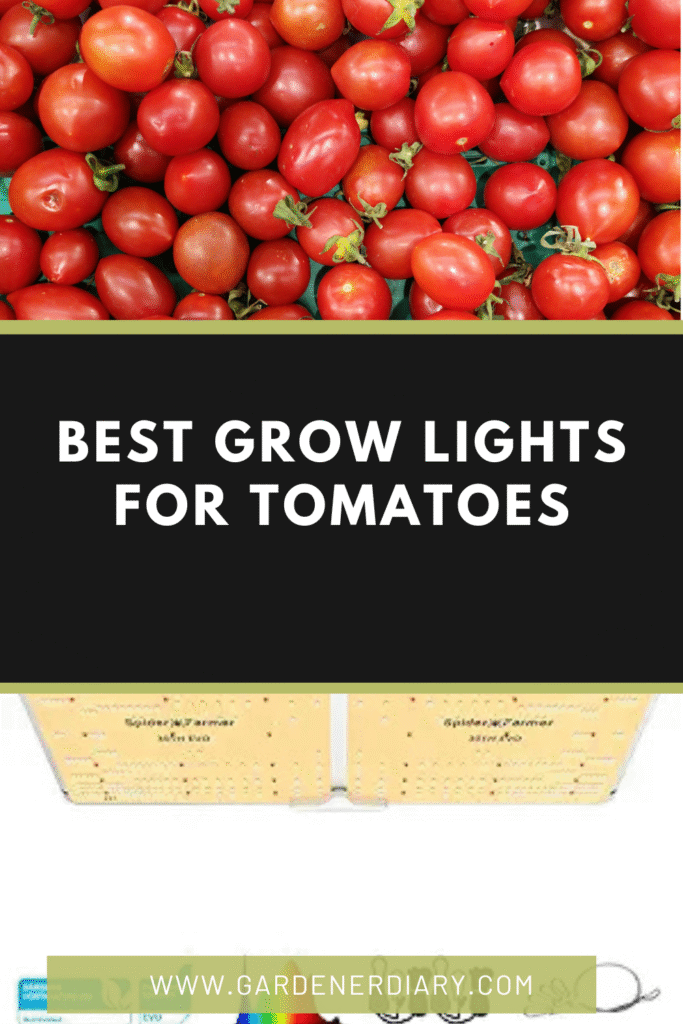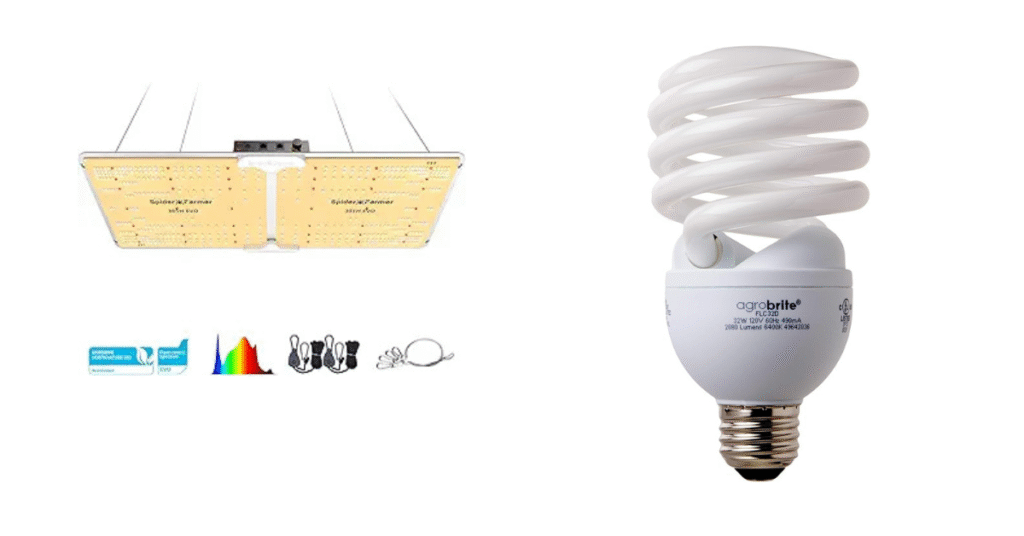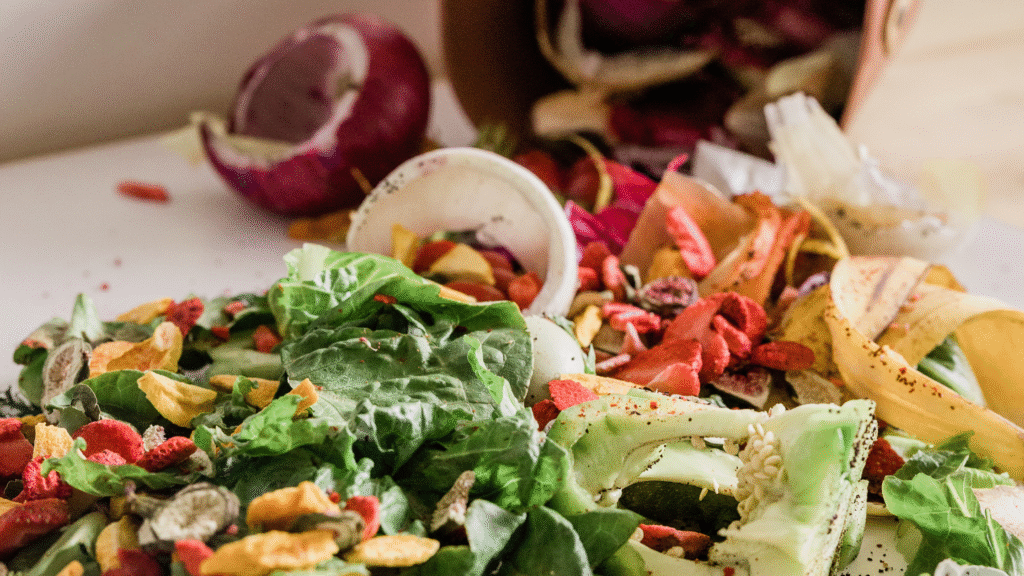Tomatoes need consistent light to grow strong, healthy, and productive. If you are growing them indoors or in a greenhouse, natural light is often not enough. That’s where grow lights help. The right grow light ensures your tomato plants receive the correct spectrum, intensity, and duration of light. In this guide, I will review the best grow lights for tomatoes, compare their pros and cons, and provide a buying guide to help you choose the right one.
Quick Comparison Table
| Product | Light Type | Wattage | Spectrum | Best For |
|---|---|---|---|---|
| Spider Farmer SF2000 | LED | 200W | Full Spectrum (Samsung LM301H EVO) | Seedlings to fruiting stage |
| Hydrofarm Agrobrite FLC32D | CFL | 32W | 6400K Daylight | Seedlings and early growth |
1. Spider Farmer SF2000 Samsung LM301H EVO LED Grow Light
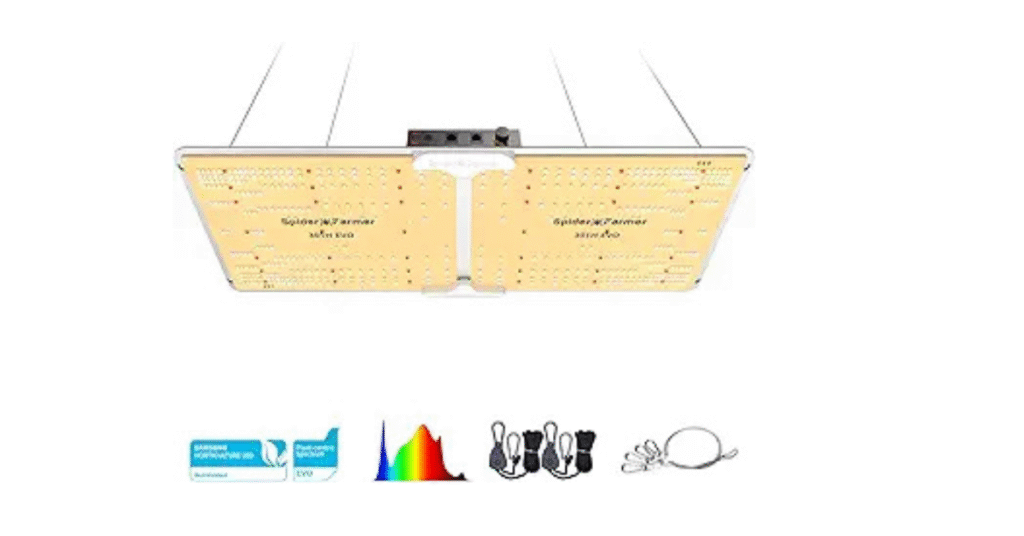
The Spider Farmer SF2000 is a high-performance LED grow light made with Samsung LM301H EVO diodes. It provides full-spectrum light, which mimics natural sunlight. This makes it suitable for all tomato growth stages, from seed starting to flowering and fruiting. It covers a 2×4 grow tent area, making it a reliable choice for small to medium indoor gardens.
Pros
- Full spectrum with high PAR output
- Energy efficient at 200W
- Dimmable function for different growth stages
- Strong light penetration for dense tomato canopies
- Reliable Samsung diodes with long lifespan
Cons
- Higher price compared to basic grow lights
- Best performance requires proper ventilation to manage heat
2. Hydrofarm Agrobrite FLC32D Compact Fluorescent Lamp
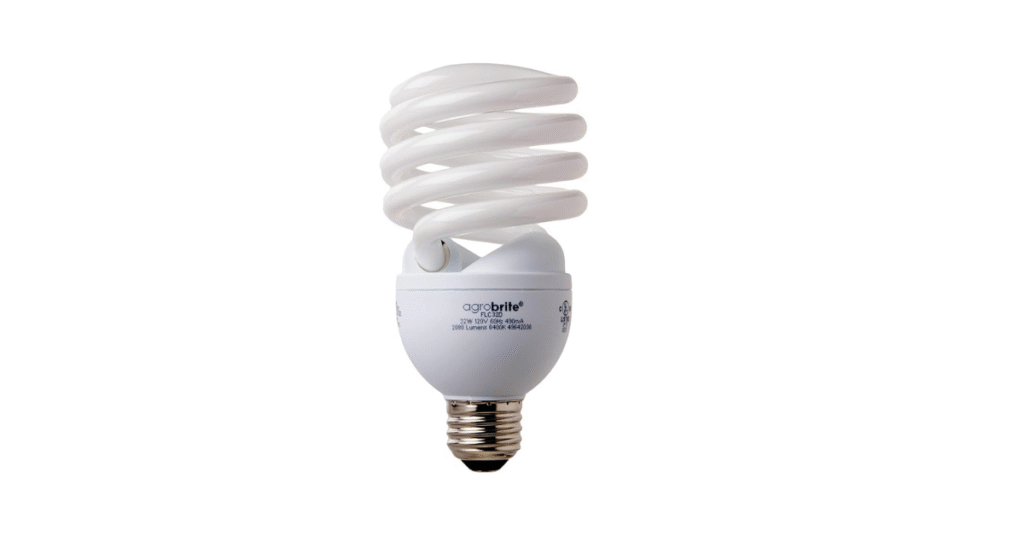
The Hydrofarm Agrobrite FLC32D is a compact fluorescent grow light with a 6400K daylight spectrum. It works well for seedlings and young tomato plants that need steady but gentle light. With only 32 watts, it consumes little power, making it a budget-friendly option for hobby growers or small-scale setups.
Pros
- Affordable and energy efficient
- Ideal for seedlings and young plants
- Easy to install with standard sockets
- Produces natural daylight color temperature (6400K)
Cons
- Not strong enough for flowering or fruiting stages
- Limited coverage compared to LED grow lights
Buying Guide: Choosing the Best Grow Light for Tomatoes
Selecting the right grow light depends on your setup, budget, and growing goals. Here are the key factors to consider:
1. Light Spectrum
Tomatoes need different light spectrums during their growth stages:
- Blue light (400–500nm): Encourages strong root development and leafy growth.
- Red light (600–700nm): Promotes flowering and fruiting.
- Full-spectrum lights: Provide both red and blue, plus green and far-red, to mimic natural sunlight.
2. Intensity and Coverage
- For seedlings, lower intensity is enough.
- For fruiting plants, you need higher intensity to penetrate thick foliage.
- Match the grow light size to your grow area. A 2×4 grow tent pairs well with 200W LED lights, while small trays need compact fluorescents.
3. Energy Efficiency
Electricity costs matter. LED grow lights are more efficient and durable compared to fluorescent lights. While LEDs cost more upfront, they save money in the long run.
4. Heat Management
Tomatoes thrive in consistent conditions. Some lights generate heat that can stress plants. LEDs usually stay cooler than HID or fluorescent bulbs, reducing the need for extra ventilation.
5. Ease of Use
Consider dimmable features, plug-and-play designs, and compatibility with timers. These make your gardening routine easier and ensure consistent light schedules.
6. Budget
- Budget growers: Compact fluorescent bulbs are affordable but limited.
- Serious indoor gardeners: LED grow lights are an investment that pays off with stronger yields and better efficiency.
Why Use Grow Lights for Tomatoes?
Tomatoes are sun-loving plants. Without enough light, they become weak, leggy, and produce fewer fruits. Grow lights allow you to control the intensity, duration, and spectrum of light your plants receive. This results in:
- Stronger seedlings
- Faster growth
- More flowers and higher yields
- Year-round harvests
Tips for Using Grow Lights with Tomatoes
- Place LED lights 12–18 inches above tomato plants.
- Adjust height as plants grow to avoid burning the leaves.
- Run lights for 14–16 hours per day during the vegetative stage.
- Reduce to 12–14 hours during flowering and fruiting.
- Use a timer for consistency.
FAQs
What type of light is best for tomatoes?
Tomatoes thrive under full-spectrum LED grow lights because they closely mimic natural sunlight. These lights provide both the blue wavelengths that encourage leafy growth and the red wavelengths that support flowering and fruiting. A full-spectrum LED ensures your tomatoes get everything they need from seedling to harvest. If you are just getting started with indoor gardening, you may also want to read this detailed guide on grow lights for houseplants to understand how spectrum and intensity impact different plants.
Can I grow tomatoes under a grow light?
Yes, you can grow tomatoes successfully under grow lights. Many gardeners who lack outdoor space rely on grow lights to raise healthy tomato plants indoors. With proper light intensity, duration, and placement, tomatoes can complete their entire lifecycle indoors. Just make sure your plants also have access to good soil, nutrients, and containers—investing in best storage containers for vegetables and fruits can help you manage both harvested tomatoes and seedlings effectively.
How many watts grow light for tomatoes?
The wattage you need depends on the size of your growing area. For a small setup with one or two plants, a 100–200W LED grow light is enough. For larger areas or multiple plants, you may need 400W or higher. A good rule is around 30–40 watts per square foot of growing space. This ensures your tomatoes receive enough light for strong stems, flowers, and fruit production.
Can tomatoes get too much grow light?
Yes, too much light can harm your tomato plants. Overexposure can cause leaf burn, stunted growth, and stress. If you notice leaves curling or showing brown patches, your grow light may be too close or running for too many hours. Tomatoes generally need 14–16 hours of light during the vegetative stage and about 12–14 hours during fruiting. Using a timer helps you avoid overexposure.
How many plants can I grow with a 100W LED light?
A 100W LED grow light is typically strong enough for 1 to 2 tomato plants. This allows enough light intensity for each plant to grow healthy and yield well. If you want to grow more plants, you will need additional lights or a higher wattage option. Always remember that the spread and coverage of the light matter as much as the wattage.
Can too much LED light hurt plants?
Yes, excessive LED light can hurt plants. When LEDs are placed too close to tomato leaves, they can cause light burn, which looks like yellowing or crispy spots. Unlike sunlight, LEDs concentrate intense light directly on the plants, so maintaining the right distance is essential. A balance of duration and intensity keeps your tomatoes safe and productive.
How far should a 1000 watt LED grow light be from a plant?
A 1000W LED grow light should usually be placed 24–36 inches above tomato plants, depending on the growth stage. Seedlings need less intensity, so keep the light higher. During fruiting, lights can be lowered slightly to boost flower and fruit development, but never too close to avoid heat or light stress. A good practice is to monitor your leaves daily for any signs of stress.
Do plants grow faster under LED?
Yes, plants often grow faster under LEDs when the right spectrum and intensity are used. LEDs provide consistent and targeted light, unlike sunlight which changes with the season. This helps tomatoes grow year-round with fewer interruptions. Many gardeners also find LEDs more reliable than traditional fluorescent or HID bulbs because they produce less heat and use energy more efficiently. If you’re thinking about expanding your gardening space, pairing LED setups with a compost bin ensures your tomatoes get all the nutrients they need for fast, healthy growth.
What color LED is best for plants?
Both blue and red LEDs are essential for tomato growth. Blue light encourages leafy growth and strong stems, while red light supports flowering and fruiting. That’s why full-spectrum LEDs, which combine both colors along with additional wavelengths, are considered the best for tomatoes. They provide balanced light that mimics natural sunlight, helping plants at all stages.
Do LED lights use a lot of electricity?
No, LED grow lights are highly energy efficient compared to older fluorescent or HID bulbs. They produce strong light while consuming less power, which makes them cost-effective for long-term tomato growing. A 200W LED grow light can often replace a 400W HID bulb, cutting electricity costs almost in half. This makes them ideal for gardeners who want high yields without high bills.
Is sunlight better than grow lights?
Sunlight is the most natural and powerful source of energy for tomatoes. However, it’s not always available in the right intensity or duration, especially for indoor gardeners or those in colder climates. Grow lights allow you to control both spectrum and hours of exposure, giving your tomatoes a steady environment. Many gardeners combine natural sunlight with LEDs for the best results. And if you’re into gardening gifts or upgrading your space, checking out best gifts for gardeners, kids gardening gloves, or even thorn-proof gardening gloves can make the process easier and more enjoyable.
Conclusion
The best grow lights for tomatoes depend on your goals and growing space. For full growth from seedlings to fruiting, the Spider Farmer SF2000 is the top choice. It delivers powerful, full-spectrum light with energy efficiency and deep penetration. For a budget-friendly option to start seedlings, the Hydrofarm Agrobrite FLC32D is reliable and affordable.
By choosing the right grow light, you give your tomato plants the best chance to thrive indoors and produce delicious fruits year-round.
